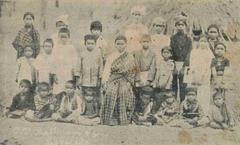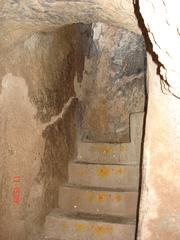
Pandit Nehru Bus Station Vijayawada: Visiting Hours, Tickets, and Comprehensive Travel Guide
Date: 04/07/2025
Introduction
Pandit Nehru Bus Station (PNBS), also known as Telugu Satavahana Prayana Pranganam, stands as a hallmark of modern public transit in Vijayawada, Andhra Pradesh. As one of India’s largest and busiest bus terminals, PNBS is not only a critical junction for regional and interstate travel but also a symbol of the city’s growth, accessibility, and cultural vibrancy. This guide provides detailed insights into PNBS’s history, facilities, ticketing system, connectivity, accessibility, and practical travel tips—essential reading for commuters, tourists, and anyone seeking to navigate Vijayawada’s premier transport hub.
For the latest updates and schedules, refer to official resources such as the APSRTC website and Andhra Pradesh Tourism.
Table of Contents
- Historical Evolution of Pandit Nehru Bus Station
- Visitor Information
- Station Infrastructure and Amenities
- Connectivity and Access
- Economic and Social Impact
- Nearby Attractions
- Travel Tips
- Frequently Asked Questions (FAQs)
- Visuals and Media
- Conclusion
- References
Historical Evolution of Pandit Nehru Bus Station
Origins and Development
Established to address the burgeoning transit needs post-independence, PNBS is named after India’s first Prime Minister, Jawaharlal Nehru. Its strategic location on the southern bank of the Krishna River and proximity to both the city’s railway junction and major highways (NH16, NH65) cement its status as a regional transportation cornerstone.
Expansion and Modernization
Spanning 28 acres, PNBS comprises 60+ platforms, with further expansion underway to accommodate increasing ridership. Modern amenities such as air-conditioned lounges, digital ticketing, and automated bus washing have been integrated. The station currently handles over 2,700 bus arrivals and departures daily, serving upwards of 200,000 passengers (Wikipedia, Amaravati Voice).
Role in Urban Mobility
PNBS is integral to Vijayawada’s urban mobility strategy, notably as the central node for the upcoming Metro Rail project, which will further enhance urban and suburban connectivity (Magicbricks, The Hindu).
Visitor Information
Visiting Hours
- Open 24/7: PNBS operates round the clock to cater to continuous bus services.
- Ticket Counters and Amenities: Generally open from 5:00 AM to 11:00 PM. Some digital kiosks and essential services remain accessible at all hours.
Ticketing and Pricing
- Onsite Counters: Multiple APSRTC and private ticket counters.
- Digital Ticketing: Book tickets in advance via the APSRTC website, official mobile apps, or digital kiosks within the terminal.
- Types of Services: Ordinary, express, deluxe, super luxury, metro AC, and air-conditioned coaches.
- Pricing: Fares vary by distance, route, and bus type. City buses are most economical; premium services are priced higher.
Accessibility
- Facilities for Differently-Abled: Ramps, reserved seating, accessible restrooms, elevators, tactile paving, and priority boarding.
- Assistance: Trained staff at information desks assist elderly and disabled passengers.
How to Reach PNBS
- From Vijayawada Railway Station: ~1.3 km; accessible by city bus, taxi, or auto-rickshaw.
- From Vijayawada Airport: ~20 km; taxis and app-based cabs available.
- By Road: Located on NH-65 in Krishna Lanka, easily reachable from all city zones (CityBusGuide).
Station Infrastructure and Amenities
Terminal Layout
- Departure Platforms: 48 for outbound travel.
- Arrival Platforms: 12 for inbound services.
- City Bus Port: 10 platforms dedicated to local buses.
- RTC House: APSRTC administrative headquarters.
Passenger Facilities
- Waiting Halls: Spacious, with air-conditioned lounges and separate sections for families and women.
- Food and Refreshments: Multiple eateries, snack bars, and local specialty stalls.
- Retail and Essentials: Shops for travel needs, ATMs, pharmacies, mobile charging stations, and cloakrooms.
- Digital Information: LED boards provide real-time schedules and platform details.
- Free Wi-Fi: 5G hotspots with 30 minutes of complimentary access (Amaravati Voice).
- Clean Restrooms: Regularly maintained, with enhanced paid options.
- Security: CCTV surveillance, uniformed staff, medical aid centers, and emergency response services.
Connectivity and Access
Urban and Intermodal Connections
- City Buses: Seamless connections to all city neighborhoods.
- Rail: Vijayawada Railway Station is a key interchange, just minutes away.
- Upcoming Metro: PNBS is a central hub for the Vijayawada Metro Rail Project (Magicbricks).
- Taxi/Auto Stands: Designated zones for quick pick-up and drop-off.
Economic and Social Impact
Economic Contribution
- Employment: Hundreds of APSRTC employees and thousands of indirect jobs (food, retail, transport).
- Commerce: Boosts local trade and supports hotels, restaurants, and shops around the station.
- Tourism: Main arrival point for visitors to Vijayawada’s attractions, supporting special festival buses and package tours.
Social and Cultural Role
- Inclusion: Affordable transit for diverse social groups, with special provisions for women, elderly, and differently-abled.
- Cultural Connectivity: Facilitates travel during major festivals (Dasara, Krishna Pushkaralu), reinforcing the city’s cultural fabric.
Nearby Attractions
- Kanaka Durga Temple: Revered shrine atop Indrakiladri Hill, about 3–5 km from PNBS.
- Undavalli Caves: Ancient rock-cut architecture, approx. 10 km away.
- Bhavani Island: Scenic river island, accessible by ferry.
- Prakasam Barrage: Landmark bridge over the Krishna River.
- Gandhi Hill: Memorial and panoramic viewpoint.
- Besant Road: City’s commercial and entertainment hub.
Travel Tips
- Arrive early during peak hours and festivals.
- Use official counters or authorized apps for ticketing.
- Keep tickets and ID ready for verification.
- Use digital display boards and information kiosks for updates.
- Secure belongings and use official porters.
- If new to the city, familiarize yourself with basic Telugu phrases for smoother communication.
Frequently Asked Questions (FAQs)
Q1: What are the PNBS visiting hours?
A: The station operates 24/7; ticket counters generally function from 5:00 AM to 11:00 PM.
Q2: How can I buy tickets?
A: Tickets can be purchased at counters, digital kiosks, or online via the APSRTC website.
Q3: Are there facilities for differently-abled visitors?
A: Yes, PNBS offers ramps, accessible restrooms, tactile paving, elevators, and staff assistance.
Q4: What are the best ways to reach PNBS?
A: By city bus, taxi, or auto from the railway station or airport; well-connected by road.
Q5: Is there Wi-Fi at the station?
A: Yes, free 5G Wi-Fi is available in select areas for 30 minutes.
Q6: What attractions are near PNBS?
A: Kanaka Durga Temple, Undavalli Caves, Bhavani Island, Prakasam Barrage, Gandhi Hill, and more.
Visuals and Media

Interactive Map of PNBS and Nearby Attractions
Virtual Tour of PNBS
Alt tags are optimized for search engines: “Pandit Nehru Bus Station Vijayawada main entrance,” “Kanaka Durga Temple near PNBS,” etc.
Conclusion
Pandit Nehru Bus Station is more than a transportation hub—it is a vital part of Vijayawada’s identity, fostering connectivity, economic vitality, and cultural exchange. With its round-the-clock operations, extensive amenities, and strategic location, PNBS ensures a seamless journey for millions each year. Whether you’re a daily commuter, pilgrim, or tourist, leveraging the station’s modern facilities and digital services enhances your travel experience. For ongoing updates and travel assistance, refer to official channels and consider using the Audiala app for real-time information.
Plan your visit, explore Vijayawada’s attractions, and start your journey at PNBS with confidence.























